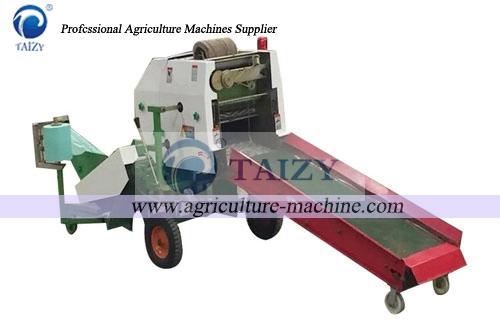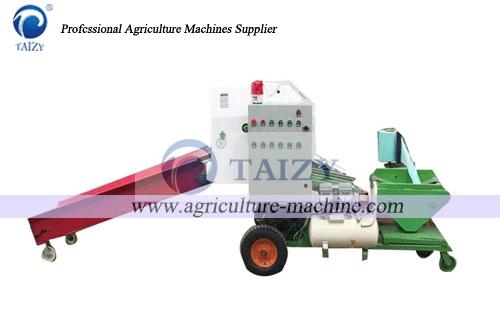When using the Full-automatic silage baling machine to make silage, we must stop feeding in the setting range of the machine, so that the density of the feed can be optimal, because the higher the density, the more air remains inside the feed. Less, on the contrary, the more air in the feed, before we can decipher the importance of silage, we first understand how the oxygen in the silage after wrapping is consumed!
First of all, the respiration of plants, although the plants are shredded by us, but the plant cells are still breathing all the time. They suck in oxygen, and they exhale carbon monoxide. The whole process is to consume organic matter in plants. Completed, the more oxygen, the more organic matter is consumed, that is, the more dry matter loss we often say, and if there is too much oxygen remaining in the feed, the large amount of heat generated by the respiration will cause the feed to heat up. If the feed temperature is too high, it is likely to cause other bad reactions, resulting in the loss of a large amount of nutrients in the feed. Today, Xiaobian gives everyone a way to reduce the loss of dry matter:
In order to reduce the dry matter loss of silage, the best and most effective way is to increase the density of the feed and add the appropriate amount of silage starter according to the actual situation.


The chemical reaction of plant respiration is as follows: C6H12O6+6O2=6CO2+ 6H2O+ 2821KJ. The process of respiration is a process in which the organic matter contained in the plant and the oxygen react chemically to produce carbon monoxide and water and energy. The energy generated by the respiration brings about the temperature change of the feed, so the fever and the plant occurring when the silage is produced There is a certain relationship between respiration.
At the same time as the respiration of the plant, some of the aerobic spoilage bacteria and mold remaining in the silage also consume the residual oxygen in the feed, and the glucose, fructose, protein and other substances contained in the silage are used as reactants. Metabolic reactions occur, which produce mycotoxins (such as aflatoxins, penicillins, aflatoxins, etc.) and some things that make silages deteriorate. Therefore, the silage with insufficient solidity will last for a long time, resulting in poor quality of the silage after fermentation. Although the problem in this area is fatal, we can avoid this kind of situation to the greatest extent possible. The Full-automatic silage baling machine can maximize the compaction of feed, reduce the loss of dry matter and improve the quality of silage.
